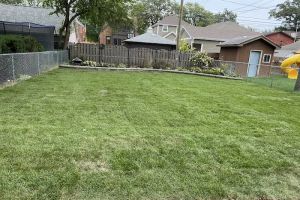
How to Develop a Seasonal Garden Maintenance Calendar
- Why a Seasonal Garden Maintenance Calendar is Important
- Creating Your Seasonal Garden Maintenance Calendar
- Maintenance Tasks by Season
- Case Study: Seasonal Gardening Success
1. Why a Seasonal Garden Maintenance Calendar is Important
Creating a seasonal garden maintenance calendar is essential for ensuring that your garden flourishes throughout the year. Gardens require different care at different times of the year, and a calendar helps organize these tasks. By tracking the seasonal needs of your plants, you'll ensure they get the right attention at the right time, leading to a healthier, more vibrant garden.
Gardens Are Dynamic
Gardens are dynamic environments that change with the seasons. During the spring, plants are waking up, while summer demands regular watering and pest control. Autumn is a time for cleaning up, and winter requires preparation for the cold. Without a proper maintenance schedule, it’s easy to overlook crucial tasks that could impact the health of your plants.
Stay Ahead of Potential Problems
A seasonal calendar also helps you stay ahead of potential problems, such as pest infestations or plant diseases. Regularly scheduled maintenance allows you to identify issues early, which can save you time, effort, and money in the long run.
2. Creating Your Seasonal Garden Maintenance Calendar
Now that you understand the importance of a seasonal maintenance calendar, let’s walk through how to create one that works for you. Developing a maintenance calendar involves understanding the unique needs of your garden, based on your climate zone, the types of plants you have, and the time you can devote to garden care.
Step 1: Assess Your Garden’s Needs
Start by assessing your garden. Take note of what plants you have, the climate in your region, and any special requirements they might have. For example, some plants may need more frequent watering in summer, while others may need extra mulch in the winter to prevent frost damage.
Step 2: Research Seasonal Tasks
Next, research the maintenance tasks required for each season. Some common tasks include:
- Spring: Pruning, planting, fertilizing
- Summer: Watering, weeding, pest control
- Fall: Harvesting, cleaning up, mulching
- Winter: Protecting plants, planning for next season
Step 3: Create Your Calendar
Once you’ve gathered all the necessary information, create a detailed calendar. Break down each month with specific tasks for your garden. Consider factors such as weather, plant growth cycles, and how much time you can realistically spend on your garden each week.
3. Maintenance Tasks by Season
Let’s break down the most important maintenance tasks to include in your seasonal calendar.
Spring: Preparing for Growth
In spring, your garden is coming back to life. This is the time to focus on planting, fertilizing, and pruning. For trees and shrubs, cut back dead or damaged branches. For flowers and vegetables, consider planting early-season crops that thrive in cooler weather. Don’t forget to prepare your soil by adding compost or fertilizer to promote healthy growth.
Summer: Maintenance and Pest Control
Summer is when your garden needs the most attention. Regular watering, especially during hot spells, is essential for keeping your plants hydrated. This is also the peak season for pests, so make sure you inspect your plants regularly for insects and diseases. Be proactive with organic pest control and weeding to maintain a healthy garden environment.
Fall: Harvest and Clean-Up
As the growing season winds down, fall is the time to harvest remaining crops and clean up dead plants. Removing fallen leaves and decaying vegetation can help prevent disease. Mulching your garden beds helps protect the roots from the cold and keeps the soil insulated through the winter months. This is also a great time to plant fall bulbs for next spring’s bloom.
Winter: Protecting Your Garden
During the colder months, it’s important to protect your garden from frost and winter damage. Use frost covers or row covers to protect delicate plants, and trim back any plants that need winterization. Winter is also a great time to plan for the upcoming gardening season, making adjustments to your planting schedule and preparing for any new additions to your garden.
4. Case Study: Seasonal Gardening Success
Consider the success story of Jane, a homeowner from Colorado, who implemented a seasonal maintenance calendar for her garden. Before creating her calendar, Jane’s garden suffered from inconsistent care—some plants thrived while others struggled. After researching the specific needs of her plants and developing a seasonal care plan, Jane was able to maintain a vibrant and healthy garden throughout the year. She found that the key to success was consistency and staying ahead of each season’s tasks. Her garden flourished, and her enjoyment of gardening grew as she became more organized and proactive.
Conclusion
Creating a seasonal garden maintenance calendar is the key to maintaining a beautiful, thriving garden throughout the year. By understanding the needs of your plants and committing to regular maintenance, you can ensure your garden stays healthy in every season. Whether you’re a seasoned gardener or just starting out, developing a maintenance schedule will give you the structure and guidance you need to be successful. For the best tools, resources, and services to help with your garden care, visit Beautiful Landscapes to find everything you need to enhance your gardening journey.









 Infinity Lawn & Landscaping4.0 (52 reviews)
Infinity Lawn & Landscaping4.0 (52 reviews) QualityWorks Trademark LLC4.0 (30 reviews)
QualityWorks Trademark LLC4.0 (30 reviews) Eubanks Environmental5.0 (10 reviews)
Eubanks Environmental5.0 (10 reviews) BrightView Landscape3.0 (16 reviews)
BrightView Landscape3.0 (16 reviews) Statements In Stone Pool and Patio4.0 (47 reviews)
Statements In Stone Pool and Patio4.0 (47 reviews) Schmitt's Landscape Tree service North Aurora4.0 (4 reviews)
Schmitt's Landscape Tree service North Aurora4.0 (4 reviews) How to Landscape for Seasonal Wildlife Attraction in Your Garden
How to Landscape for Seasonal Wildlife Attraction in Your Garden How to Build a Wildlife Habitat Garden That Supports Biodiversity
How to Build a Wildlife Habitat Garden That Supports Biodiversity How to Use Garden Art to Add Personality to Your Outdoor Space
How to Use Garden Art to Add Personality to Your Outdoor Space How to Plan Outdoor Fire & Water Features Harmoniously for Your Garden
How to Plan Outdoor Fire & Water Features Harmoniously for Your Garden How to Revive a Neglected Lawn Step by Step
How to Revive a Neglected Lawn Step by Step How to Choose Native Shrubs That Thrive Without Fertilizer
How to Choose Native Shrubs That Thrive Without Fertilizer